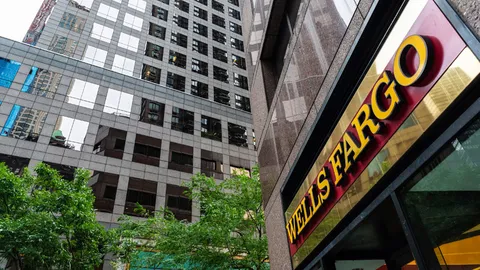
Wells Fargo Signs Agreement to Sell Rail Equipment Portfolio
Wells Fargo & Company (NYSE: WFC) announced today that it has entered into a definitive agreement to sell the assets of its rail equipment leasing business. The buyer is a newly formed joint venture between GATX Corporation, a leading global railcar lessor, and Brookfield Infrastructure Partners L.P., a global infrastructure investor and a flagship entity of Brookfield Asset Management. The transaction, which includes the full portfolio of Wells Fargo’s rail operating and finance lease assets, is expected to close in the first quarter of 2026 or earlier, subject to customary closing conditions and regulatory approvals.
The divestiture marks a major step in Wells Fargo’s broader corporate strategy to streamline operations and concentrate on core banking activities. The company is strategically realigning its business model to emphasize customer-centric financial services while reducing its exposure to capital-intensive and non-core businesses.
A Strategic Decision Aligned with Corporate Simplification
“This transaction is consistent with Wells Fargo’s ongoing strategy of simplifying our businesses and focusing on products and services that are core to our clients,” said David Marks, Executive Vice President of Wells Fargo Commercial Banking. “The sale of our rail equipment leasing portfolio allows us to further align our resources with areas where we see the greatest opportunity for growth and client impact.”
Marks emphasized that the move is part of a long-term transformation plan at Wells Fargo, aimed at increasing efficiency, improving returns, and enhancing focus on delivering industry-leading banking, lending, and investment solutions. The decision to exit the rail leasing space follows a growing trend among financial institutions to divest non-core assets, particularly those requiring significant capital investments and specialized management.
Transaction Scope and Financial Overview
The transaction involves the sale of Wells Fargo’s entire portfolio of rail operating lease assets, which carry an estimated book value of approximately $4.4 billion. In addition to the operating lease portfolio, the transaction also includes the company’s rail finance lease portfolio, further underscoring the comprehensive nature of the divestiture.
Despite the size and scale of the asset sale, Wells Fargo stated that the transaction is not expected to have a material impact on its financial position or earnings. This reflects the relatively limited role the rail leasing division plays in the overall financial architecture of Wells Fargo’s business, as well as the bank’s ability to absorb the transition with minimal disruption.
The company has not disclosed specific terms related to payment structure or transaction timelines beyond the projected closing in the first quarter of 2026. However, the use of a joint venture vehicle as the purchaser provides additional financial flexibility and strategic alignment for the acquiring parties.
Advisory Roles in the Transaction
Wells Fargo was advised exclusively by Wells Fargo Securities, LLC, which served as the financial advisor for the transaction. Legal counsel was provided by Simpson Thacher & Bartlett LLP, a prominent law firm known for its work in complex M&A transactions and financial services matters.
The use of internal and external advisory support signals the importance of the transaction to Wells Fargo’s transformation agenda. It also ensures that all aspects of regulatory compliance, risk assessment, and valuation were thoroughly vetted throughout the deal process.
Rail Asset Portfolio: History and Scope
Wells Fargo’s entry into the rail equipment leasing market began in earnest following its 2015 acquisition of GE Capital Rail Services. That move gave Wells Fargo one of the largest and most diverse railcar leasing fleets in North America, including a substantial inventory of tank cars, hopper cars, gondolas, and flatcars serving clients across energy, chemicals, agriculture, and manufacturing.
Since the acquisition, Wells Fargo Rail had operated as a key business line within the company’s Commercial Capital segment. However, evolving regulatory requirements, shifting capital allocation priorities, and strategic refocusing have prompted a gradual reevaluation of the unit’s fit within Wells Fargo’s broader organizational goals.
The decision to divest the rail portfolio reflects a clear pivot toward lower-risk, higher-return businesses more closely aligned with Wells Fargo’s core competencies in commercial banking, wealth management, and consumer financial services.
The Buyers: GATX and Brookfield Infrastructure
The acquiring entity is a newly established joint venture formed by GATX Corporation and Brookfield Infrastructure Partners L.P. GATX will hold an initial 30% equity stake in the venture, with Brookfield Infrastructure owning the remaining 70%. GATX also holds an option to acquire full ownership of the joint venture in the future, suggesting a long-term strategic vision for integration and expansion.
GATX, headquartered in Chicago, has over 125 years of experience in the railcar leasing industry and is known for its strong operational platform, disciplined asset management, and customer-focused service model. The company manages one of the largest fleets of railcars in North America and Europe, including tank cars, freight cars, and specialty assets.

Brookfield Infrastructure, meanwhile, is part of the Brookfield Asset Management group, which manages over $1 trillion in assets globally. Brookfield Infrastructure brings deep financial strength and expertise in asset-heavy sectors, making it a valuable strategic partner in a capital-intensive industry like rail leasing.
Together, the GATX-Brookfield joint venture is positioned to absorb and optimize Wells Fargo’s rail portfolio, ensuring continuity for existing lessees and potentially unlocking synergies through platform integration, operational efficiency, and commercial growth.
Industry Context and Broader Implications
The divestiture comes at a pivotal moment for the North American rail industry. Despite challenges posed by supply chain disruptions and economic volatility in recent years, rail remains a critical mode of freight transport. It offers a cost-effective, fuel-efficient, and environmentally friendly alternative to trucking and shipping for a variety of bulk commodities and industrial goods.
With increasing demand for infrastructure investment and transportation resilience, the timing of the acquisition signals confidence in the long-term prospects of the rail leasing sector. The transaction also reflects the growing interest of institutional investors in hard asset strategies, particularly those involving transportation, logistics, and infrastructure.
For Wells Fargo, the sale allows for a sharper strategic focus on its transformation goals, while for GATX and Brookfield Infrastructure, it presents a rare opportunity to expand scale, diversify fleet offerings, and deepen customer engagement across the continent.
A Clean Break and a Clearer Focus
By exiting the rail equipment leasing business, Wells Fargo is making a decisive move to streamline its operations and prioritize sectors that align more closely with its vision of a modern, focused, and responsive financial institution.
The transaction allows the bank to reduce operational complexity, reallocate capital, and channel internal resources toward enhancing its core businesses. At the same time, the sale ensures the continued stewardship of the rail assets by experienced and well-capitalized players in the industry.
As the deal progresses toward closing, Wells Fargo is expected to maintain transparent communication with clients, partners, and stakeholders to ensure a smooth transition and minimal disruption.

